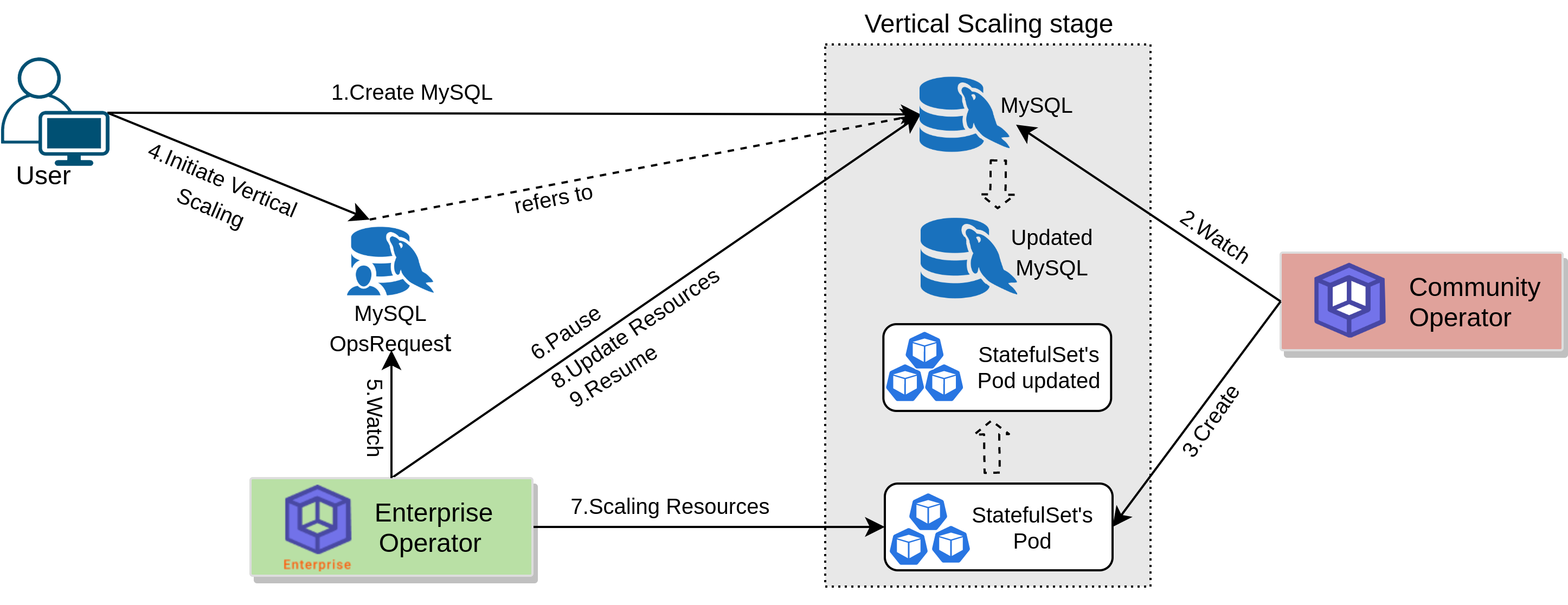You are looking at the documentation of a prior release. To read the documentation of the latest release, please
visit here.
New to KubeDB? Please start here.
Vertical Scaling MySQL
This guide will give you an overview of how KubeDB enterprise operator updates the resources(for example Memory and RAM etc.) of the MySQL database server.
Before You Begin
- You should be familiar with the following
KubeDBconcepts:
How Vertical Scaling Process Works
The following diagram shows how the KubeDB enterprise operator used to update the resources of the MySQL database server. Open the image in a new tab to see the enlarged version.

The vertical scaling process consists of the following steps:
At first, a user creates a
MySQLcr.KubeDBcommunity operator watches for theMySQLcr.When it finds one, it creates a
StatefulSetand related necessary stuff like secret, service, etc.Then, in order to update the resources(for example
CPU,Memoryetc.) of theMySQLdatabase the user creates aMySQLOpsRequestcr.KubeDBenterprise operator watches forMySQLOpsRequest.When it finds one, it halts the
MySQLobject so that theKubeDBcommunity operator doesn’t perform any operation on theMySQLduring the scaling process.Then the
KubeDBenterprise operator will update resources of the StatefulSet replicas to reach the desired state.After successful updating of the resources of the StatefulSet’s replica, the
KubeDBenterprise operator updates theMySQLobject resources to reflect the updated state.After successful updating of the
MySQLresources, theKubeDBenterprise operator resumes theMySQLobject so that theKubeDBcommunity operator resumes its usual operations.
In the next doc, we are going to show a step by step guide on updating resources of MySQL database using vertical scaling operation.






























